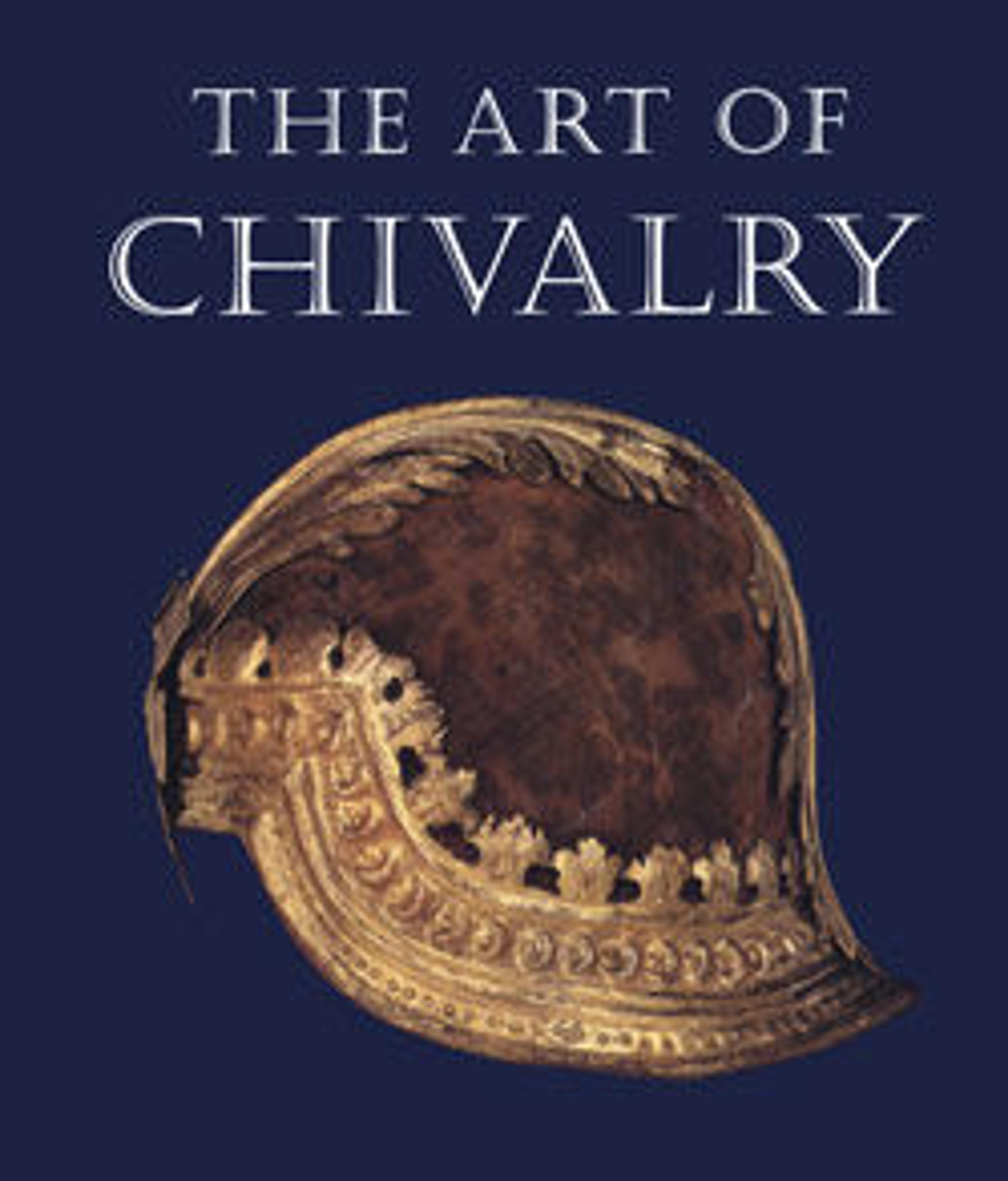Boar Spear
The obtusely pointed oval head is reinforced by a heavy mid-ridge, and almost entirely covered with etched decoration of foliate strapwork. A rivet at the bottom of the socket serves for attaching the toggle, carved from staghorn and tied on with leather straps. The strong wooden shaft is deeply grooved and crosscut, which creates a surface of short lobes for about two-thirds of its length.
These spears were specially designed for the hunt of board and bear. The short but wide double-edged blade would inflict a heavily bleeding wound that would quickly disable the animal; the toggle would stop the on-rushing board from impaling himself too deeply and would keep the huntsman at a reasonably safe distance from the slashing tusks. The heavily lobed surface of the shaft allowed the huntsman a firm grip, even if the wood were slippery with rain, dew, or blood. Sometimes ash saplings were selected, and while still alive their bark was nicked repeatedly in order to grow scar tissue to create the desired knobby surface (gebickte Schäfte).
These spears were specially designed for the hunt of board and bear. The short but wide double-edged blade would inflict a heavily bleeding wound that would quickly disable the animal; the toggle would stop the on-rushing board from impaling himself too deeply and would keep the huntsman at a reasonably safe distance from the slashing tusks. The heavily lobed surface of the shaft allowed the huntsman a firm grip, even if the wood were slippery with rain, dew, or blood. Sometimes ash saplings were selected, and while still alive their bark was nicked repeatedly in order to grow scar tissue to create the desired knobby surface (gebickte Schäfte).
Artwork Details
- Title: Boar Spear
- Date: 16th century
- Culture: German
- Medium: Steel, wood, bone
- Dimensions: L. 93 5/8 in. (237.8 cm); L. of head 14 1/2 in. (36.8 cm); W. 3 7/16 in. (8.7 cm); Wt. 6 lbs. 0.8 oz. (2744.2 g)
- Classification: Shafted Weapons
- Credit Line: Gift of William H. Riggs, 1913
- Object Number: 14.25.455
- Curatorial Department: Arms and Armor
More Artwork
Research Resources
The Met provides unparalleled resources for research and welcomes an international community of students and scholars. The Met's Open Access API is where creators and researchers can connect to the The Met collection. Open Access data and public domain images are available for unrestricted commercial and noncommercial use without permission or fee.
To request images under copyright and other restrictions, please use this Image Request form.
Feedback
We continue to research and examine historical and cultural context for objects in The Met collection. If you have comments or questions about this object record, please complete and submit this form. The Museum looks forward to receiving your comments.
